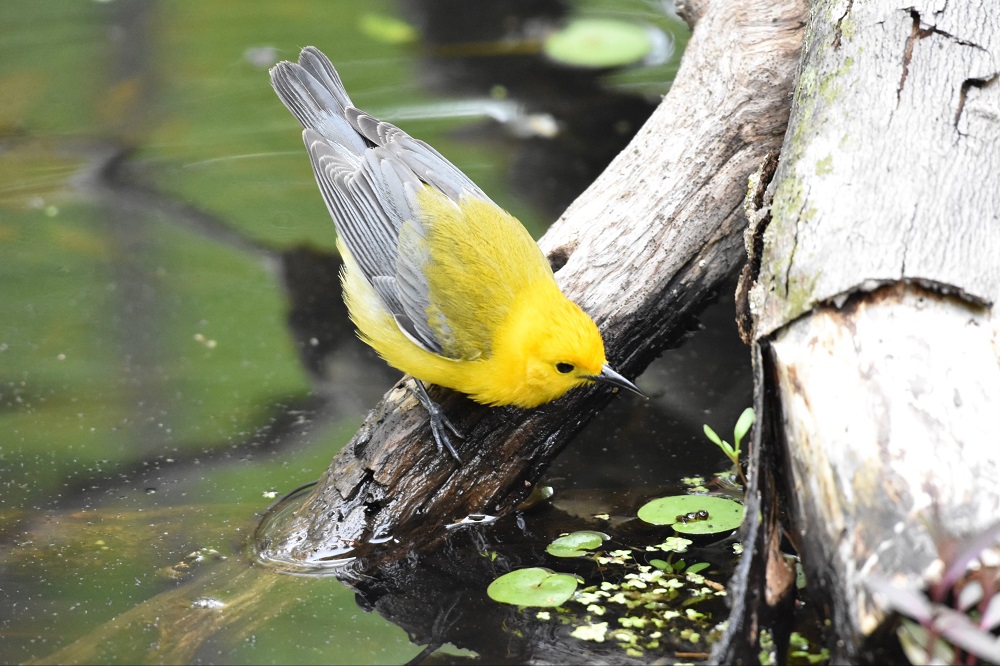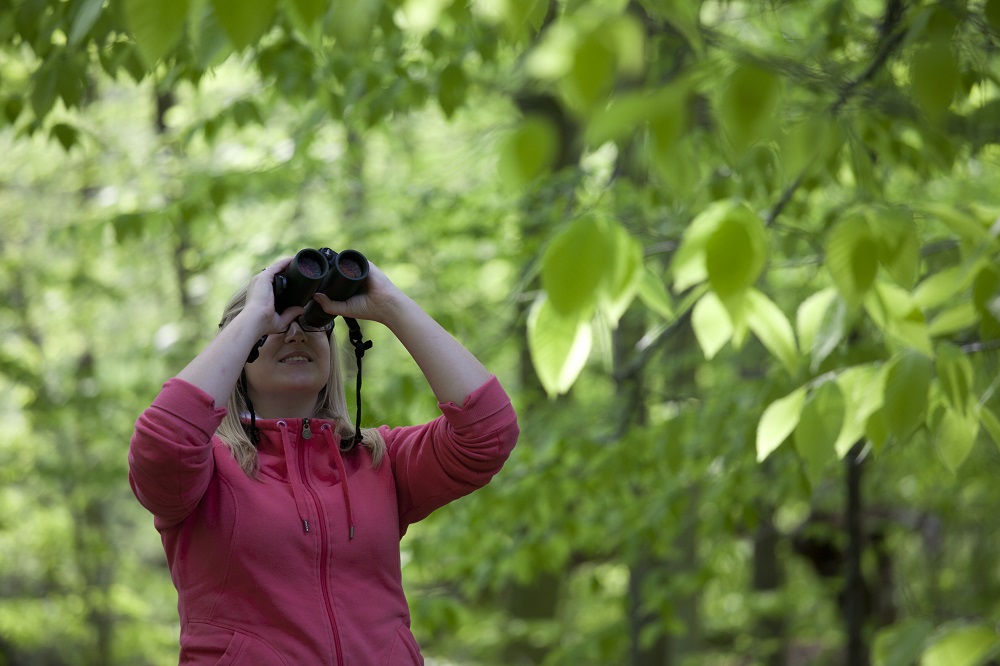Today’s post comes from Jess Matthews, chief park naturalist at Rondeau Provincial Park. Special thanks to Kevin Gevaert for providing Prothonotary Warblers photos!
Close your eyes.
Try to imagine a spring with no birdsong.
A spring without flashes of colour flitting through the bushes.
A silent forest void of oranges, yellows, blues, and reds…
…it may be hard to imagine, especially if you spend springtime in Rondeau Provincial Park, where migrating warblers appear to be dripping from the branches in all colours of the rainbow.
While such a dire situation may be difficult for us to imagine, the reality for one spring singer is one of disappearance, silence, and extinction.
The Prothonotary Warbler is currently listed as endangered in Canada, which means it is facing imminent extirpation (no longer exists in Canada) or extinction.
A shrinking habitat
This beautiful, flashy warbler’s range is restricted to southwestern Ontario in Canada, specifically needing forested wetlands like the sloughs (seasonal wetlands) at Rondeau to breed.
There are no other warblers in Ontario like this; they stand apart, even from their own group, unique and fragile.

This specialized habitat requirement means that there aren’t too many places left for Prothonotary Warblers. With the current trend of habitat loss, their options are disappearing more and more each year.
It also means that if you want a glimpse of these beautiful creatures, Rondeau in May and June is where you’ll find them.
Protecting the prothonotary
Rondeau Provincial Park has over 3,000 hectares of protected wetlands that are just perfect for the nesting requirements of the prothonotary.
To help them out, staff have erected cavity nesting boxes throughout the park that are specifically sized to suit the Prothonotary Warbler.
Having them breed in Rondeau is fantastic news for thousands of birders who flock to Rondeau each year for the spectacular May birding.

One of the stars of the show is this amazing songbird. It’s (almost!) a guaranteed sighting in the spring, as their nesting areas are right along Tulip Tree Trail, one of the most popular trails.
As you walk along Tulip Tree Trail, you will see long boardwalks spanning huge sloughs that mirror the towering Tulip Trees in their glassy surface.
What the Prothonotary Warbler sees is the perfect nesting habitat, with the protection and food storage that the water brings. Watching closely, you’ll notice that this yellow blaze flits on the low branches, gleaning aquatic insects from the surface of the water.
And watching closely is exactly what Rondeau staff are doing.

In 2022, new nesting boxes were added to Rondeau’s sloughs to help increase habitat space for these rare birds.
Monitoring was also increased, checking each box for nesting activity and listening for the distinctive “Zweet, zweet” song from the male bird.
This research is something that will increase our overall understanding of what these birds need and how their population is responding to human help.
What would it mean if we were to lose this gem of the south?
The loss of this bird has greater repercussions than the disappearance of dazzling golden yellow and the silence of their song from the forest.
The pure enjoyment of seeing this bird would be lost to recreational birders and campers alike!

Thousands of people would lose the opportunity of glimpsing this beautiful, rare bird. People from all over Ontario and the United States would see an end to the fascinating behavior of gleaning insects from the water’s surface.
It also means we will see a decline in ecosystem functions. The Prothonotary Warbler most certainly has a place and a job to do to keep the ecosystem in healthy balance.
A bird that eats aquatic insects like mosquito larvae from the sloughs? Sounds like a species we want to hang on to!
Looking for ways to help the Prothonotary Warbler?
If you live in Southwestern Ontario and have land with forested wetlands, consider erecting a nesting box to increase habitat. Information on nesting boxes can be found on NestWatch.
Learning about a species and sharing your knowledge can have a huge impact on species-at-risk. Reading this blog (consider sharing it with a friend!) and attending Discovery programs at Ontario Parks are great ways to learn more.
Finally, consider donating to Ontario Parks. Your donation will help fund science and research, as well as continue protecting these vital habitats.
This is the second edition of our 2023 species-at-risk series.
Read our previous edition: Polar Bears and Prothonotary Warblers: species on the edge
